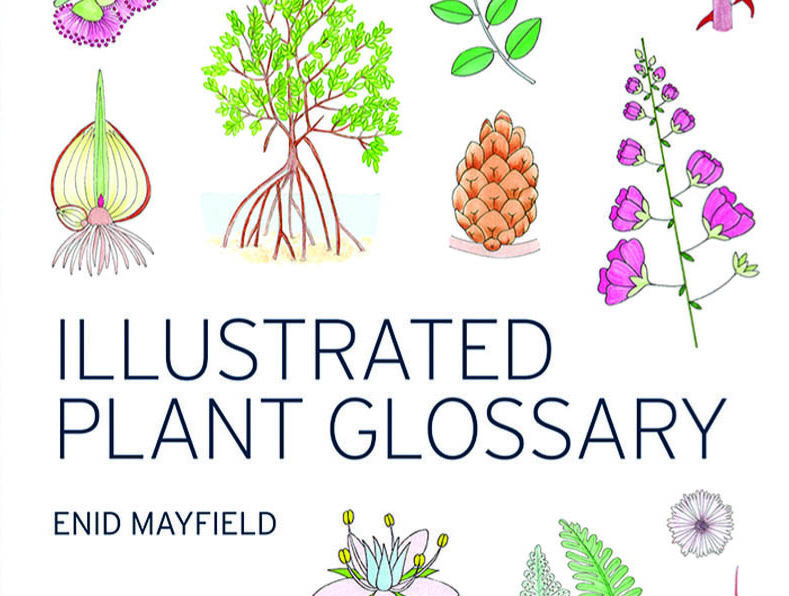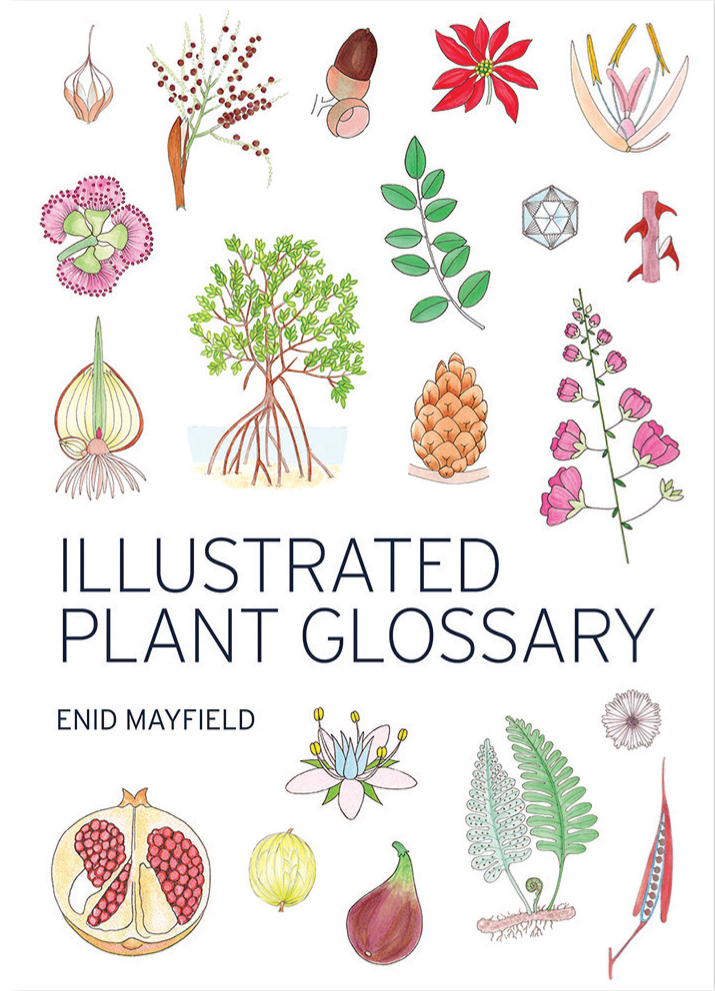Book Review: Illustrated Plant Glossary

Book Review by Glenn Leiper
‘Illustrated Plant Glossary’ by Enid Mayfield
Published by CSIRO Publishing, 332 pages, A4 size, paperback
RRP $69.99
Botanical glossaries are usually small explanatory sections in botany books that you refer to when another unknown term is used. However, here’s a glossary that’s a whole book in itself, that will assist in understanding the complexities and intricacies of practically all botanical terms and features. With over 4,000 scientific terms, its comprehensive detail is marvellous.
The author’s seven-year dedication to this project is evident in the delicate but suitably detailed watercolour paintings that complement the descriptions and the extraordinary detail she has covered in plant terminology. I admire her singular dedication and application to achieve this long-term goal. While this invaluable reference isn’t solely focused on native plants, but plants in general, there is a strong component of our endemic flora. However, I also like the way she has included botanical terms from afar such as ‘fynbos’ (South Africa), ‘prairie’ and ‘chaparral’ (USA).
Being such a comprehensive publication, there are many unfamiliar terms to me and I now know that ‘chiropterophile’ refers to a plant that is pollinated by bats. The book’s botanical terms range from the simple, such as ‘sod’, ‘bog’, ‘sucker’, ‘wart’ and ‘weed’ to more complex, such as ‘gravitropism’, ‘obdiplostemonous’, ‘androgynomonoecious’, ‘quincunx’, ‘sclerenchymatous’, ‘astylocarpepodic’ and ‘tetrasporangiate’. I never tire of being introduced to new words, even though their pronunciation at times can be a challenge!
The detail that the author has incorporated in this book at times is quite extraordinary. For example, there is a whole page on (flower) anthers, and the most comprehensive coverage of leaf shapes that I’ve seen, comprising seven pages. There is even a description of ‘splitters’ and ‘lumpers’ referring to botanists/ taxonomists who often cause frustration amongst ‘plant nuts’ like me with botanical name changes, which seem to be occurring often these days. There is also inclusion of terms such as ‘buzz pollination’ which as bee-keepers know is used by certain bees to open anthers of some plants so they can collect pollen.
As a means of deciphering and understanding the complexities of botany, this text should be an obligatory purchase, sitting alongside ‘Dictionary of Botanical names’ by the late Don Perrin, in the bookcase of anyone interested in plants.
I recommend this wonderful book to anyone interested in learning more about botany, and I anticipate that it will prove to be the ‘go to’ book for those occasions when a question arises about botanical terminology.
Book Review Published: Journal December 2021

